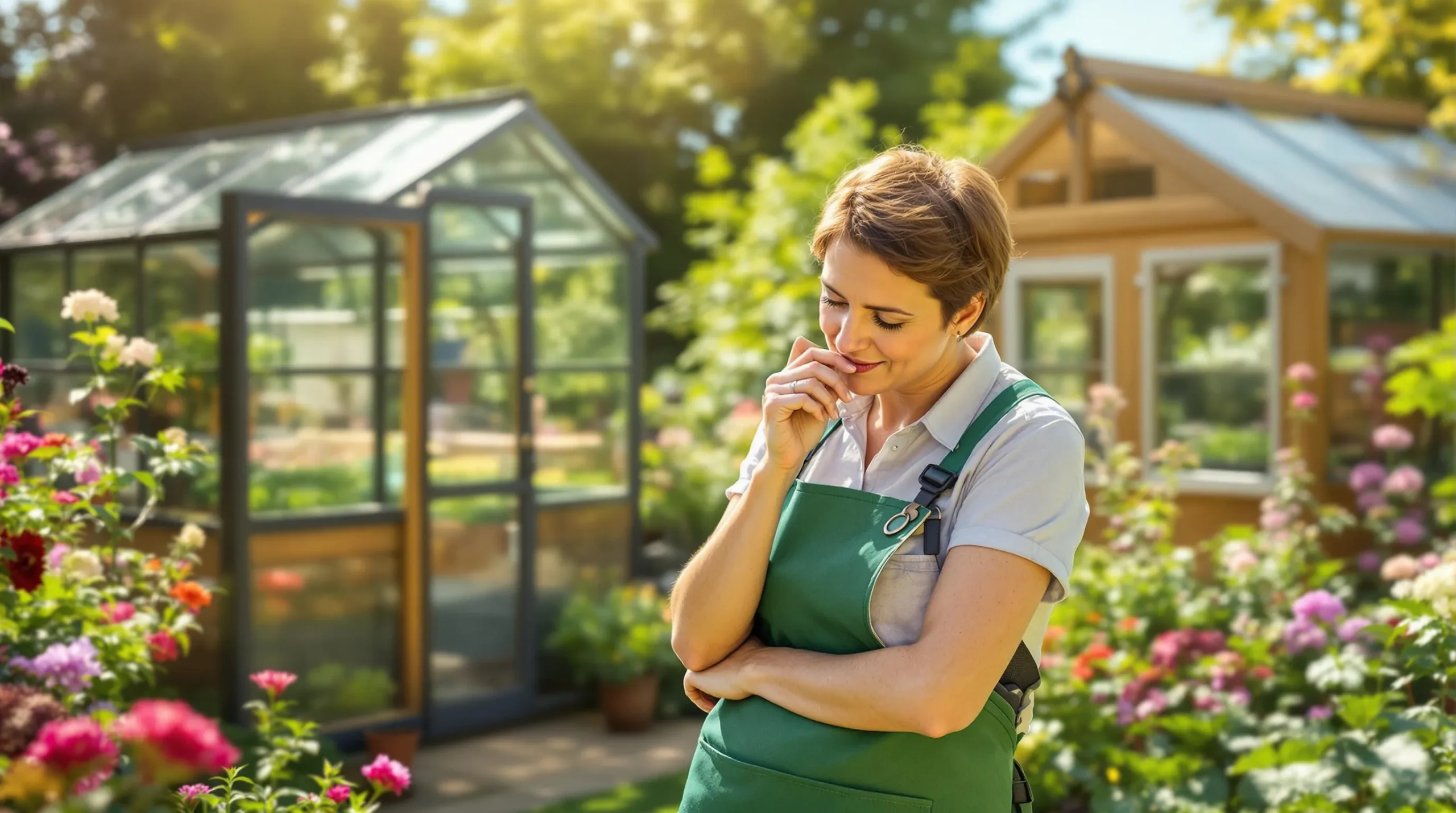
How to Choose Your First Greenhouse: A Complete Beginner’s Guide for 2025
Learn how to choose your perfect first greenhouse with our expert guide. Discover size, materials, and features to extend your growing season by 2-3 months.
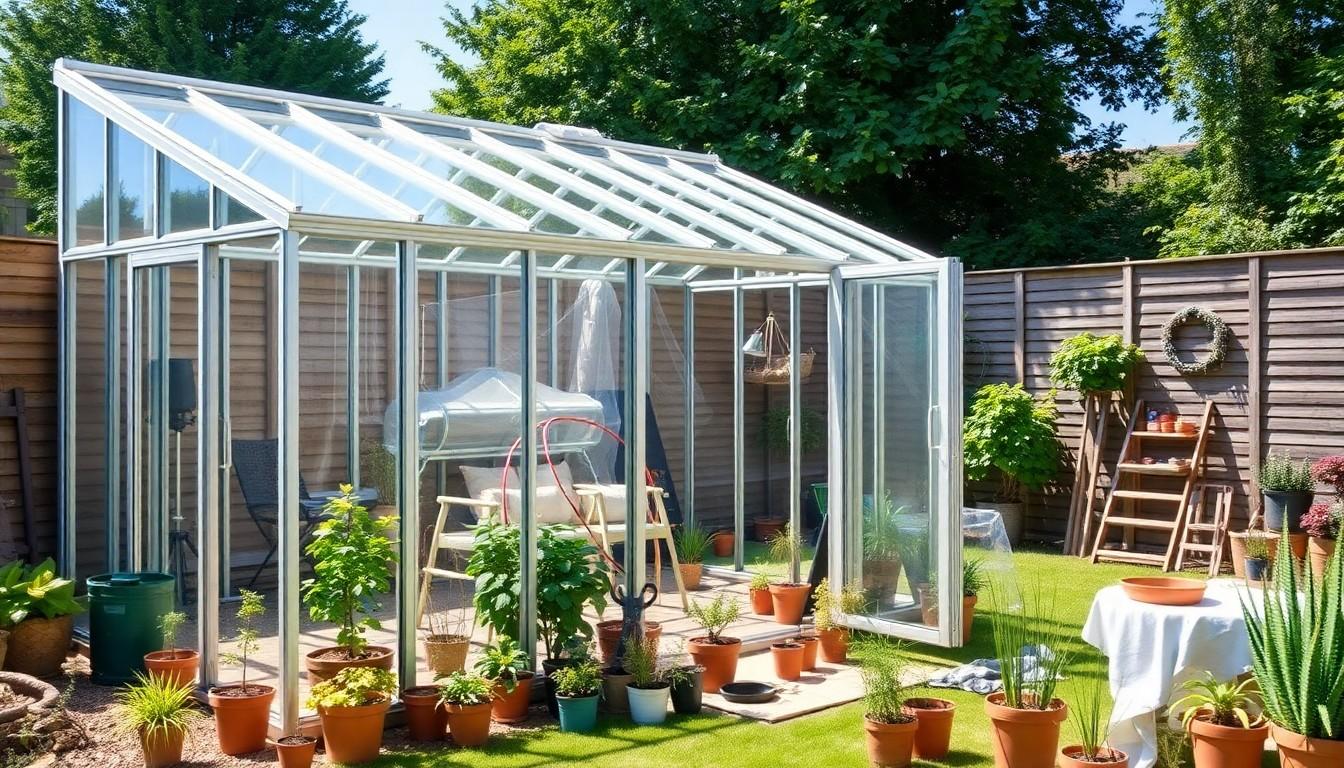
Growing your own plants year-round is now more accessible than ever with DIY polycarbonate greenhouse kits. These innovative structures offer 100% protection from harmful UV rays while providing the perfect environment for your gardening ambitions. With coverage areas up to 251ft² and robust aluminum frames, these greenhouses create an ideal space for nurturing plants, vegetables and herbs throughout every season.
Modern polycarbonate greenhouse kits combine durability with user-friendly design. The twin-wall panels are virtually unbreakable and won’t yellow or become opaque over time. You’ll appreciate the thoughtful features like built-in ventilation systems and gutters for proper drainage, ensuring your plants thrive in a controlled environment. Whether you’re a hobbyist or serious gardener, these maintenance-free structures blend Fine Shield Technology with practical functionality to extend your growing period.
Polycarbonate greenhouse kits combine durability with optimal growing conditions for year-round gardening. These structures feature twin-wall panels and aluminum frames engineered for maximum plant protection and minimal maintenance.
Polycarbonate panels offer significant advantages for greenhouse construction:
| Feature | Specification |
|---|---|
| Material Strength | 250x stronger than glass |
| UV Protection | 100% |
| Lifespan | Lifetime warranty against yellowing |
| Frame Material | Rust-free aluminium |
Polycarbonate greenhouses come in various configurations to suit different spaces:
| Measurement | Metric | Imperial |
|---|---|---|
| Coverage Area | 2.3m² | 25.1ft² |
| Storage Area | 2.2m² | 23.4ft² |
| Volume | 3.6m³ | 127.3ft³ |
Each kit includes pre-cut panels rust-free fixtures integrated drainage systems ventilation features for temperature control.
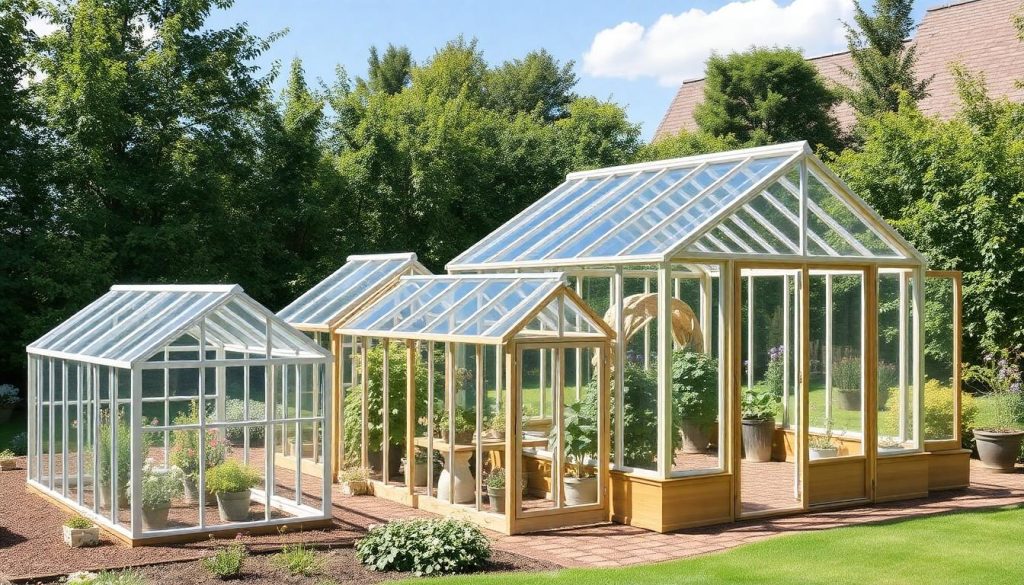
DIY polycarbonate greenhouse kits contain specific components engineered for durability and efficiency. Each kit includes frames, panels and essential hardware designed for straightforward assembly.
Polycarbonate greenhouse kits feature four primary frame materials:
Polycarbonate panels come in three configurations:
Essential hardware components include:
All hardware elements incorporate rust-resistant materials such as stainless steel or galvanised metal for extended durability.

Proper site preparation establishes a stable foundation for your polycarbonate greenhouse kit’s longevity and performance. The initial groundwork determines the greenhouse’s stability, durability and growing conditions.
A strategic greenhouse location optimises plant growth and structural integrity. Position your greenhouse in a spot receiving 6-10 hours of direct sunlight daily, particularly on the south side of your garden. Consider these essential factors:
The right foundation creates a level surface and prevents structural issues. Here are proven foundation options for polycarbonate greenhouses:
| Foundation Type | Installation Time | Cost Range (£/m²) | Durability Rating |
|---|---|---|---|
| Concrete Base | 2-3 days | 45-60 | 10/10 |
| Paving Slabs | 1-2 days | 25-35 | 8/10 |
| Crushed Gravel | 1 day | 15-20 | 7/10 |
DIY polycarbonate greenhouse assembly requires specific tools and a systematic approach. Following these steps ensures proper construction and long-term stability of your greenhouse structure.
The frame forms the backbone of your polycarbonate greenhouse. Start by gathering these essential items:
Polycarbonate panels attach to the frame using specific mounting systems:
Proper ventilation controls temperature and humidity levels:
Each component requires precise alignment and secure fastening to prevent air leaks and maintain structural integrity.
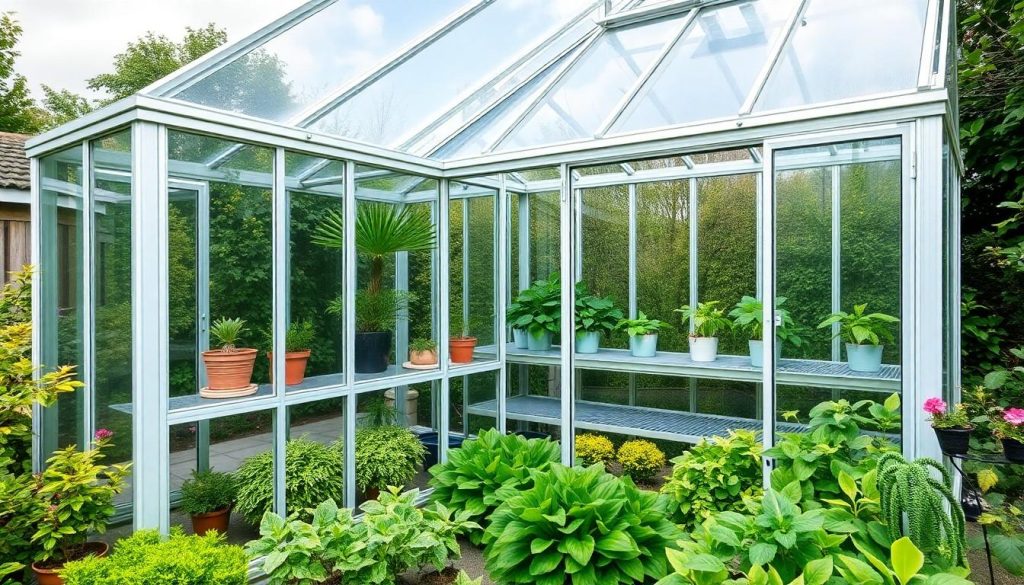
DIY polycarbonate greenhouse kits offer multiple options for personalisation through modular components and add-on features. The customisation possibilities extend from basic structural elements to advanced climate control systems.
Polycarbonate greenhouse kits include essential ventilation components for maintaining optimal growing conditions:
| Ventilation Type | Temperature Control Range | Installation Time |
|---|---|---|
| Automatic Vents | 15°C – 25°C | 30 minutes |
| Side Louvres | 10°C – 30°C | 45 minutes |
| Roof Vents | 20°C – 35°C | 60 minutes |
| Storage Type | Weight Capacity | Material |
|---|---|---|
| Wall Shelves | 25kg per shelf | Aluminium |
| Floor Units | 50kg per unit | Galvanised Steel |
| Hanging Racks | 15kg total | Powder-coated Steel |
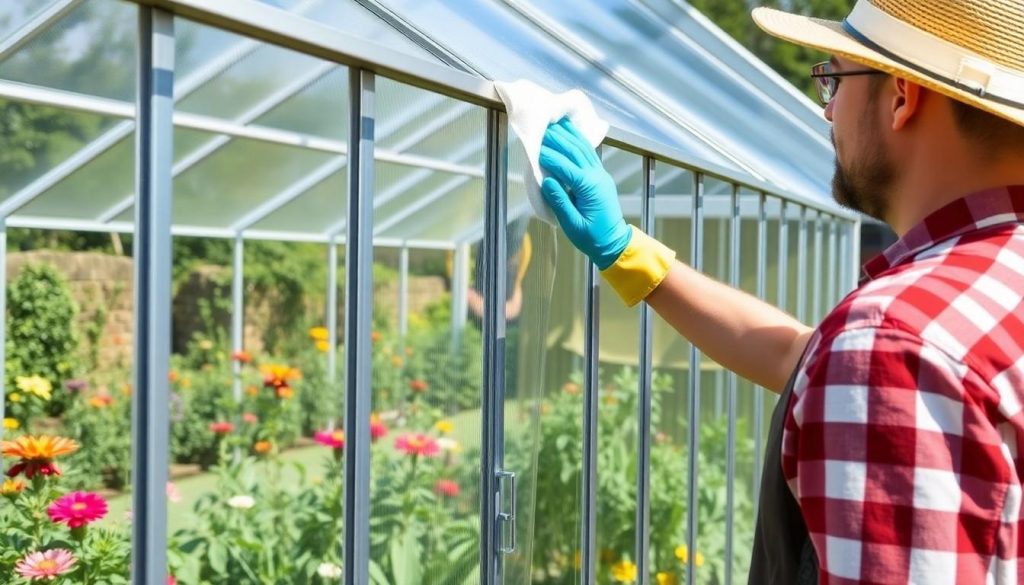
Keeping up with regular maintenance helps polycarbonate greenhouse kits last longer and creates the best environment for plants to grow. The main focus is on two important tasks: cleaning and protecting the structure from the weather.
Clean your greenhouse’s interior twice yearly – in October and April. Here’s what to include in your cleaning routine:
| Cleaning Task | Frequency | Tools Required |
|---|---|---|
| Interior wash | Twice yearly | Soft cloth, mild soap |
| Panel polish | As needed | Novus/Plexus polish |
| Ventilation clean | Monthly | Soft brush |
| Drainage check | Quarterly | Garden trowel |
| Weather Element | Protection Method | Maintenance Timing |
|---|---|---|
| Snow | Gentle removal | As needed in winter |
| Condensation | Ventilation pans | Daily monitoring |
| Temperature | Auto vent openers | Year-round |
| Rain | Gutter cleaning | Quarterly |
Building a polycarbonate greenhouse is a great way to extend your growing season and give your plants the perfect environment to thrive. These DIY kits are durable, low-maintenance, and customisable, making them a practical choice for gardeners of all experience levels.
By preparing the site properly, following the assembly steps, and keeping up with basic maintenance, you can create a long-lasting structure that protects your plants and supports healthy growth. With excellent insulation, UV protection, and flexibility in design, a polycarbonate greenhouse is a smart investment for any gardening enthusiast.
Polycarbonate greenhouse kits are extremely durable, with a life expectancy of 10-20 years. The material is 250 times stronger than glass, resistant to impact, and won’t yellow over time. With proper maintenance and care, these greenhouses can withstand various weather conditions whilst maintaining their structural integrity.
Polycarbonate offers superior insulation through its twin-wall design, blocks 100% of harmful UV rays, and is virtually unbreakable. It provides better thermal efficiency, requires minimal maintenance, and eliminates the risk of dangerous breakage. The material also ensures even light distribution throughout the greenhouse.
Four main frame options are available: lightweight aluminium, rust-resistant galvanised steel, decay-resistant wood, and composite frames made from wood fibres and recycled plastic. Each option offers different benefits in terms of durability, maintenance requirements, and aesthetic appeal.
A polycarbonate greenhouse requires 6-10 hours of direct sunlight daily for optimal performance. When choosing a location, consider sun exposure throughout the day, seasonal changes, and potential shade from nearby structures or trees to ensure adequate light for plant growth.
Regular maintenance includes biannual interior cleaning, monthly ventilation system checks, and quarterly drainage inspections. Clean the panels with mild soap and water, monitor condensation levels, and inspect seals and gutters regularly. Avoid harsh chemicals and abrasive cleaning tools that might damage the surface.
Yes, polycarbonate greenhouses are highly customisable with modular components and add-on features. Options include advanced climate control systems, automatic vent openers, shelving units, tool hangers, seed trays, and potting benches. These additions can enhance functionality and organisation within the space.
Assembly is straightforward with pre-cut panels and included hardware. The process involves frame construction, panel installation, and setting up doors and ventilation. Most kits come with detailed instructions and require basic tools. Two people can typically complete assembly in one to two days.
Common foundation options include concrete bases, paving slabs, and compacted gravel. Each option varies in installation time, cost, and durability. The chosen foundation should be level, provide adequate drainage, and suit the greenhouse size and local climate conditions.

Learn how to choose your perfect first greenhouse with our expert guide. Discover size, materials, and features to extend your growing season by 2-3 months.
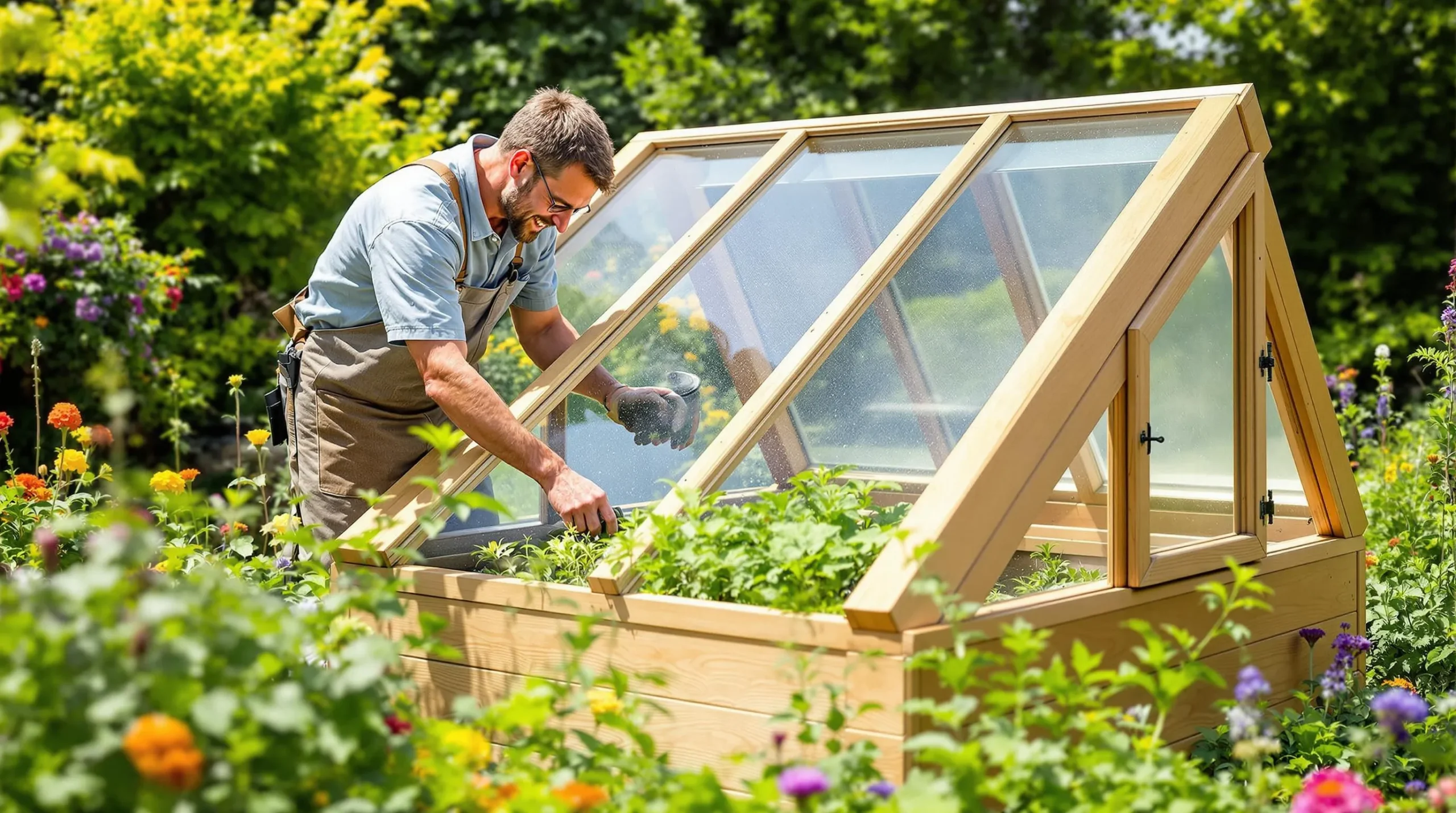
Learn how to make a cold frame to extend your growing season, protect plants in winter, and grow seedlings all year. Simple, cost-effective, and DIY-friendly!